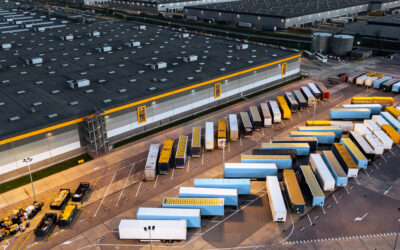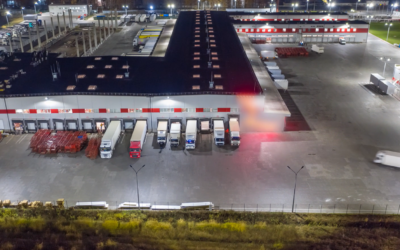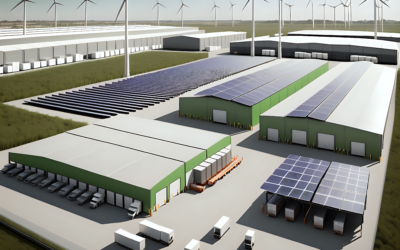The eCommerce boom has boosted even further the key role of warehouses in today’s shifting economies. The past years have raised awareness about the growing impact of the e-commerce industry, which is expected to grow 12% to 14% per year over the next decade. This is mainly due to the changing habits of customers ordering more and more online and expecting an efficient and quick delivery.
Covid-19 and its resulting lockdown accelerated this trend, which drove people online and shifted big parts of retail from traditional to eCommerce.
Heads of supply chain are continuously working to adapt and optimize their logistics footprint to keep up with the rising frequency and volume of online trade, and the more and more volatile nature of the logistic flows.
Traditionally, industries used to keep their warehouses close to their production sites as it was difficult to predict when and where the demand would come from.
Today, with eCommerce and predictive analytics, industries are eager to have a multitude of strategically located last-mile and cross-docking warehouses, where they can reassemble products and move them to the final customers with minimal time to delivery. Location is also one of the key strategies heads of Supply Chain are adopting to minimize business disruption.
Businesses will need to redesign their supply chain organization and look for warehouses adapted to new customers’ requirements.
Experts estimate that there will be an annual need for 1 million sqm for warehouse space in Europe from eCommerce operators. Yet there is currently not enough warehouse space to cope with this increasing demand, leaving the vacancy rate below 5% in most popular areas. This situation creates a major window of opportunity for investments.
Overcoming investment challenges in logistics real estate
Investors need to understand the logistics challenges and market dynamics. For example, assessing strategic locations for the warehouse based on demand and popularity among logistics users, and whether or not traditional logistics corridors in Europe will remain the best investments.
Real Estate investments require many technical expertise to evaluate if a warehouse meets modern technical requirements. For example, does it have the necessary number of loading docks, the appropriate height to the ceiling, sufficient floor loading capacity and modern fire safety systems?
Emerging technologies such as artificial intelligence, driverless cars, drones, robotics and 3D printing all promise to have a major impact on the location and type of logistics facilities available, and it is crucial to have ongoing access to logistics leaders to understand trends affecting logistics real estate.
A second challenge is to have control over logistics assets, such as successfully manage the repercussions of a tenant vacating the property and follow-up on asset-management intensive properties. Successful real estate investments rely on the experience and the ability to navigate various environments and market cycles, building well-balanced portfolios and levering the optimal time to sell.
Successful investors will also ensure to optimize efficiency and costs involved throughout the real estate investment process: Due Diligence costs at acquisition, fiscal leakage, property management costs, etc. Structuring optimized pan-European portfolios and building on a strong network of local partnerships is key to deliver on high-value growth potential.
Success in logistics real estate depends on having the assets in the right location, with the right profile, and the right partners for each location.





